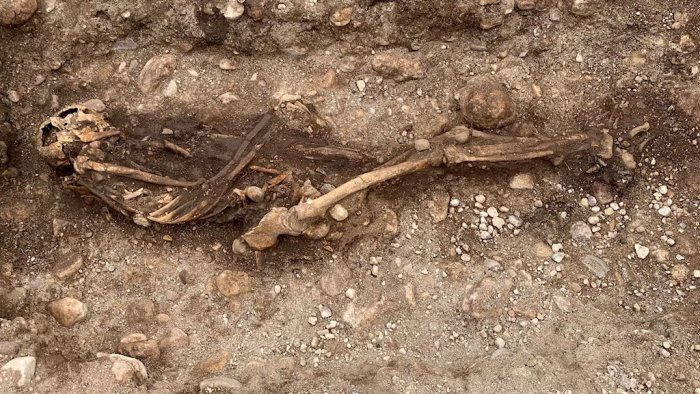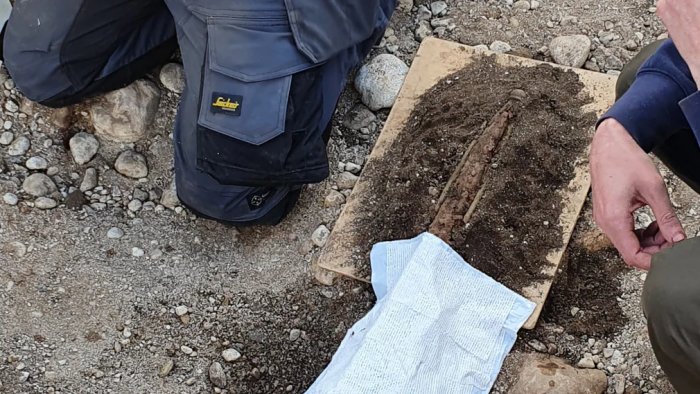Jan Bartek – AncientPages.com – Archaeology students from the Uppsala University have uncovered the remains of an Iron Age warrior in Sweden.
The find made during excavations in ʙuттle Änge on the Swedish island Gotland has been described as “rather unusual” and the deceased may not have been from Scandinavia.

Iron Age warrior discovered on Gotland in Sweden. Credit: Katarina Hedström/Sveriges Radio
The man who scientists think may have served in the Roman army was discovered in the midst of a limestone burial.
“I was present when the femur and a piece of the hip bone were excavated. You have to be very careful when digging this type of material so we had to carefully remove the soil with brushes. Eventually, we found spurs down at the feet. And when we brushed at the belly of this individual, it appeared as a piece of bronze that we carefully continued to brush forward”, student Gustav Randér told the newspaper Dagens Nyheter, describing the situation as “absolutely fantastic”.
The man who scientists think may have served in the Roman army was discovered in the midst of a limestone burial.

A sword was also found at the site. Credit: Gustav Randér
At the site there was also an 80-centimeter-long bronze sword with bronze fittings. In addition, part of the sword sheath was also preserved in the form of wood remains on both the top and bottom of the bronze sword. At the bottom is a decoration on the ski that has the shape of an acorn.
According to Alexander Andreeff Högfeldt, a doctor of archeology at Uppsala University the sword seems to be inspired by those used on the continent, and the object reveals interesting details about the life of the sword bearer.
“We know from written sources from the Mediterranean world that Germans, that is Scandinavians, served in the Roman army. So it is very possible that this person learned weapons technology from the Romans”, Alexander Andreeff Högfeldt mused.
See also: More Archaeology News
Andreeff Högfeldt described the find as “rather unusual” and said that warrior skeletons like this may be found once every 30 years.
The details about the owner of the sword, however, remain scarce. He appears to be a man with a strong jaw and solid bone structure, who lived sometime during the 300s-500s.
Scientists have announced further investigations and research will be carried out in the future.
Written by Jan Bartek – AncientPages.com Staff Writer





